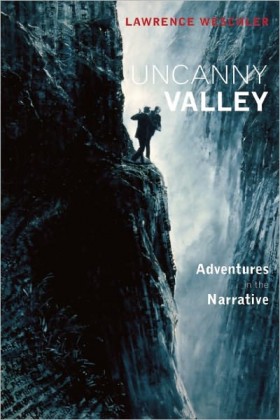“Weschler is a master of narrative nonfiction. For decades his effervescent reporting on visual art and on human rights appeared in The New Yorker and other magazines, and his book Mr. Wilson’s Cabinet of Wonder, about a mind-bending Los Angeles museum, is a classic. Weschler’s warmth and curiosity suffuse the title piece of this collection, a 2002 essay for Wired magazine on why the lifelike rendering of a human face has long eluded digital animators. His finest pieces are often about artists working at the frontiers of perception itself. In one, he details the childhood visual experiments that led Trevor and Ryan Oakes, identical twin brothers working as artists in New York, to devise a low-tech method for tracing the three-dimensional world onto canvas. (It essentially involves crossing their eyes.) When Weschler meets the sound and film editor Walter Murch, their conversation goes beyond craft to explore Murch’s theories about how much auditory stimulus viewers can absorb at a time and the power of eye contact in film and in life (he argues that blinking might serve as a sort of mental punctuation). Weschler turns to more sober reportage in a handful of human rights pieces, including a solemn account of the diplomatic contortions at the founding of the International Criminal Court. He shuttles deftly between the heavy and the irreverent; when a chattering swarm of German teenagers descends on a Holocaust memorial in Berlin, Weschler takes it as a sort of revelation: 'Maybe life does just go on, and that is its blessing (as well as its curse).' Such moments confirm his sense of wonder at how beauty works in the world, as a sort of spontaneous brimming over of convergence and coincidence. ”
– Jascha Hoffman, New York Times Book Review
Adventures in the Narrative
Shuttling between cultural comedies and political tragedies, Lawrence Weschler’s articles have throughout his long career intrigued readers with his unique insight into everything he examines, from the ordinary to the extraordinary.
Uncanny Valley continues the page-turning conversation as Weschler collects the best of his narrative nonfiction from the past fifteen years. The title piece surveys the hapless efforts of digital animators to fashion a credible human face, the endlessly elusive gold standard of the profession. Other highlights include profiles of novelist Mark Salzman, as he wrestles with a hilariously harrowing bout of writer’s block; the legendary film and sound editor Walter Murch, as he is forced to revisit his work on Apocalypse Now in the context of the more recent Iraqi war film Jarhead; and the artist Vincent Desiderio, as he labors over an epic canvas portraying no less than a dozen sleeping figures.
With his signature style and endless ability to wonder, Weschler proves yet again that the “world is strange, beautiful, and connected” (The Globe and Mail). Uncanny Valley demonstrates his matchless ability to analyze the marvels he finds in places and people and offers us a new, sublime way of seeing the world.



